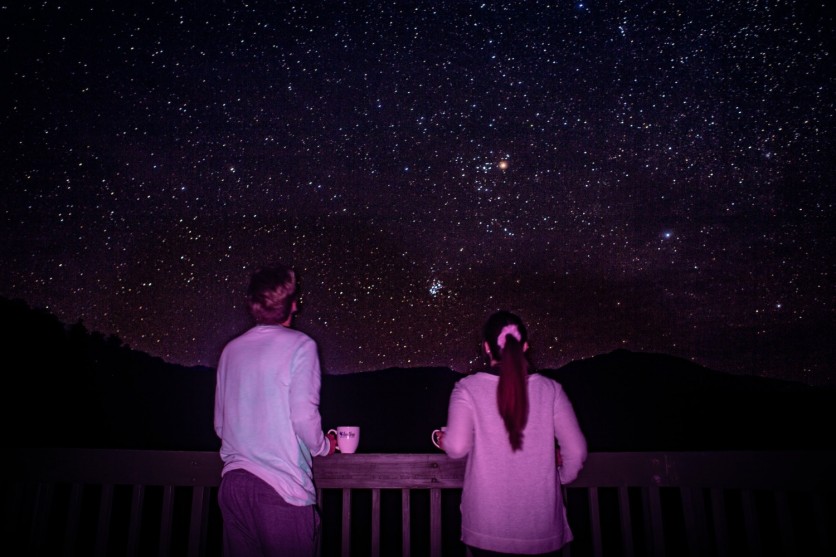The Christmas season has its own wonders to show for astronomy fans. For regular stargazers and planet lookers, this is a special month for endlessly staring at the night sky.
The countdown to Yuletide is ticking off and we have so many things to explore as we head to the grandest holiday of the year. For now, here are 25 astronomy sights that you can see with your naked eye or telescope this December.

Moon-Mercury-Venus Alignment
This rare opportunity to witness this lovely alignment is something that you should not miss this Christmas. You can witness this pattern during the afternoon of Dec. 25 with your naked eye. If you want a clearer view, use binoculars.
Aldebaran
Your Christmas Eve will be much more special when you see Aldebaran, a red giant star rising in the east. It's near the planet, particularly in Taurus. The clue when you see it? Three Belt stars of Orion.
The Pleiades
Using a simple telescope and binoculars, you can take a glimpse of this star cluster in the night sky. It's composed of seven blue-white stars which are also known as "The Seven Sisters."
The Hyades
Another impressive sighting to see is the V-shaped star cluster located in Orion's upper right side. It's visible through a small telescope.
M44
M44 is usually conspicuous after 10 pm on Christmas Eve. This star cluster dubbed as "Beehive Cluster" is a pool of 1,000 stars. You can see this through a telescope or binoculars.
M41
This other star cluster is situated 4 degrees south of Sirius. This magnificent sighting is visible to the naked eye. However, it's much better if you will use your binoculars for viewing.
Sirius
The long winter nights are often highlighted by the presence of Sirius. This amazing sight is something to behold since it's the brightest star out there.
Orion Nebula
Astronomy won't be complete without the Orion Nebula which is a bright nebula in Orion's Sword. Using binoculars in viewing it might leave a gray smudge but using a telescope is more recommended to fully enjoy its beauty.
Orion's Belt
The Orion's Belt is one of the most striking astronomical sights to witness on December nights. Its brightness can be compared to Polaris. To see it thoroughly, you need to use binoculars.
Orion
8 pm on Christmas is the peak time when you can see Orion. This constellation is breathtaking and dramatic at the same time.
M57
This Ring Nebula is best viewed under a telescope. You can obviously see its layers and how it looks around the dying stars.
Vega
The Summer Triangle asterism has been popularized by Vega, a visible star during Christmas. It's considered the fifth brightest star in existence.
M15
It's highly suggested to use a small telescope to capture glimpses of this globular cluster. It's the best thing to do to vividly see how the silvery-gray stars glimmer right before your eyes.
M33
This one is closely related to M33. The best time to view this is when there's no light pollution in the sky.
M31
The most stunning thing that you will ever see here is the Andromeda Galaxy which is 2.2 million light years away from the planet.
Caroline's Rose
The Cassiopeia cluster Caroline's Rose is named after Caroline Herschel, an astronomer related to William Herschel. Are you looking for blue and orange stars? Maybe it's up here.
Cassiopeia
The W-shaped star constellation is all about Cassiopeia. You can't go wrong in its brightness under a pair of binoculars.
Double Cluster
Located between the inverted Y of Perseus and the W of Cassiopeia, this star cluster resembles a spilled salt in the kitchen.
Polaris
The 48th brightest star is the Pole Star also known as Polaris. The northern sky is very lustrous because of it.
Mizar/Alcor
The double star has varying magnitudes. Miza is the brighter star while Alcor has a fainter glow.
The Plough
The Ursa Major constellation contains The Plough, a group of stars that resemble a question mark.
Saturn
What's the best thing that you will see on Saturn? Yes, its rings, but make sure to view it under a telescope.
Jupiter
Jupiter is best viewed during December eve, specifically half an hour right after sunset. The largest planet has more than 80 moons.
Uranus
You can view Uranus under the naked eye, but to see it in more detailed, use a large telescope to take a peek at the green-hued star beside it.
Mars
The Red Planet is a frequent visitor on Christmas eve. Astronomers usually observe it during early December. Don't miss it on Dec. 8.

ⓒ 2025 TECHTIMES.com All rights reserved. Do not reproduce without permission.




